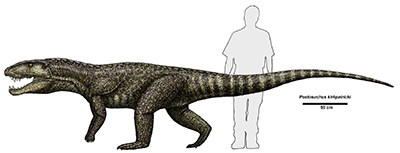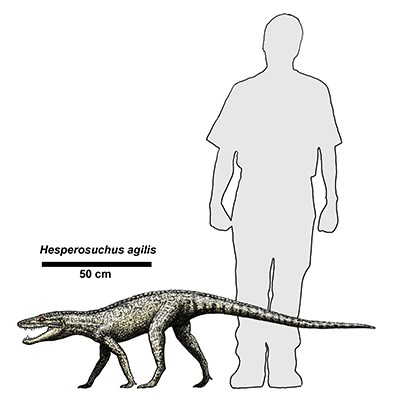|
Archosaurs are divided into two groups: Pseudosuchians (like crocodiles, alligators, and their extinct relatives) and Ornithodirans (birds and their extinct relatives).
Aetosaurs and Revueltosaurus 
NPS/Jeff Martz

NPS
Poposaurids, shuvosaurids, and rauisuchids

NPS/Jeff Martz

NPS/Jeff Martz
Crocodylomorphs 
NPS/Jeff Martz Hesperosuchus is the most common crocodylomorph found among park fossils.
|
Last updated: June 13, 2024
